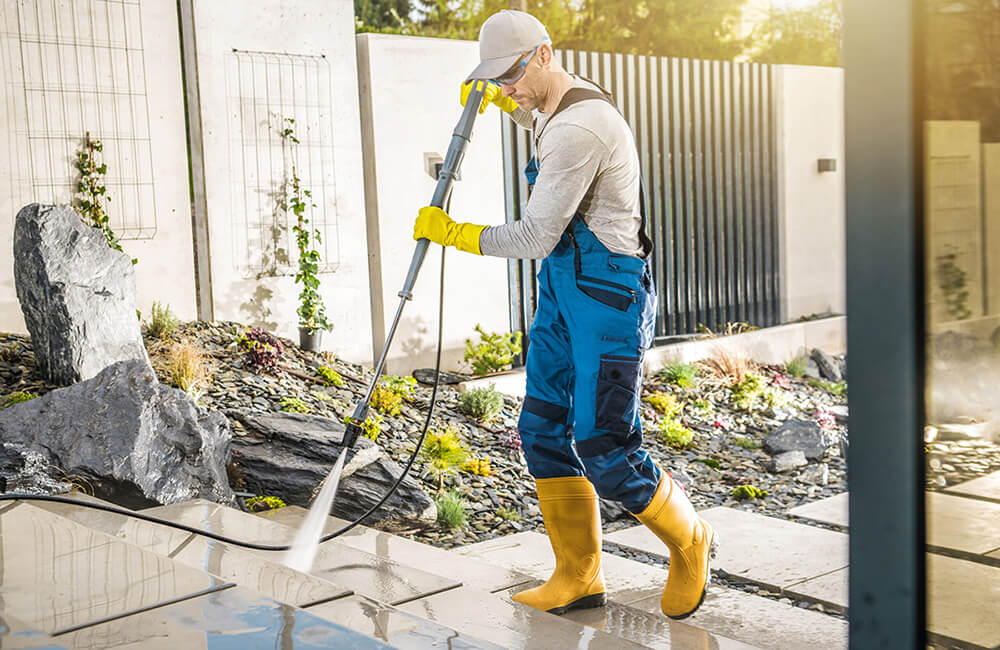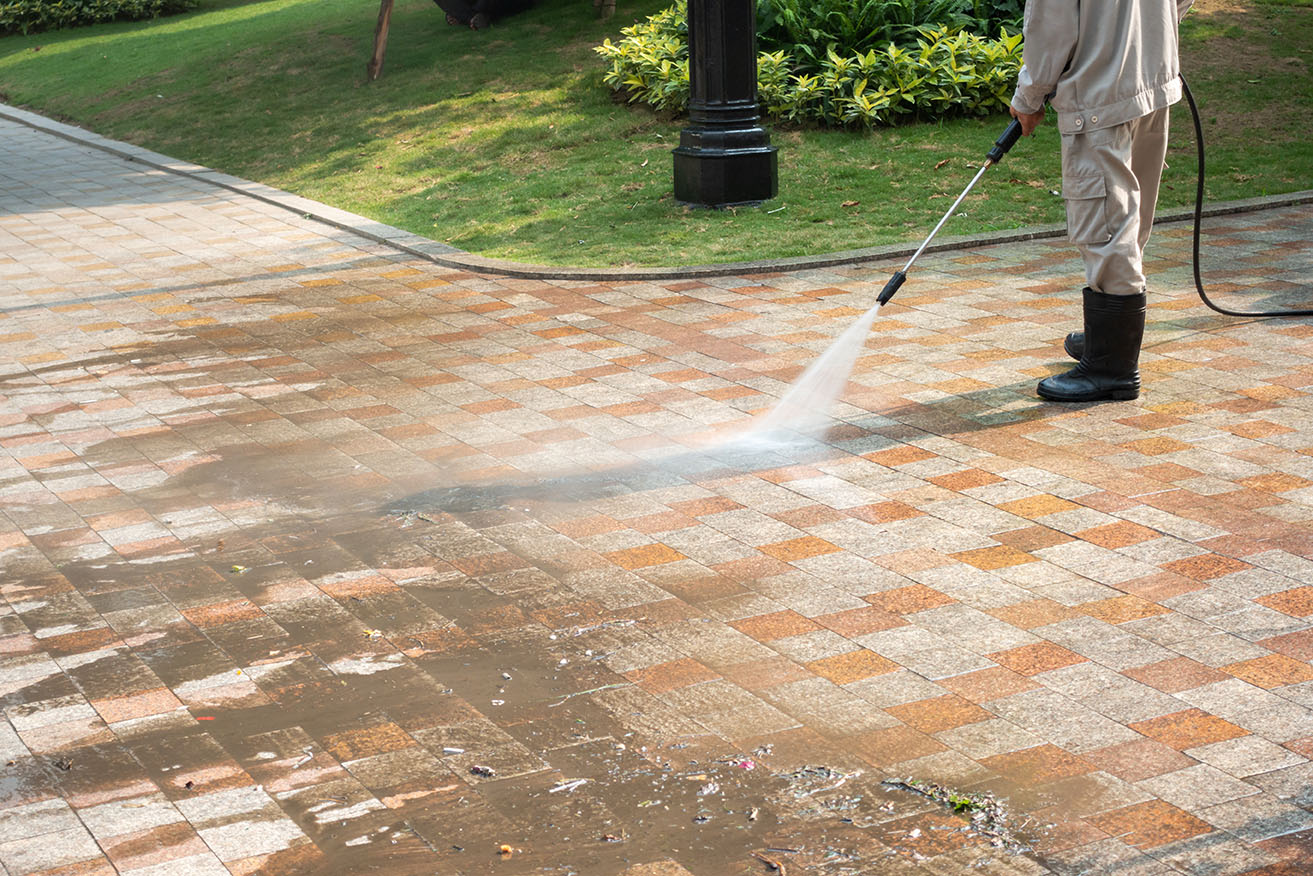Discover the Eco-Friendly Cleaning Techniques Utilized by Pressure Washing Lockhart Professionals
Discover the Eco-Friendly Cleaning Techniques Utilized by Pressure Washing Lockhart Professionals
Blog Article
Revitalize Your Home: The Ultimate Guide to Pressure Laundering
Pressure washing is a vital device for home owners aiming to recover the visual charm and longevity of their homes. To navigate these intricacies and accomplish optimal outcomes, it is vital to explore the fundamental elements of stress cleaning, including functional advice on dealing with usual stains and making certain safety throughout the procedure.
Recognizing Pressure Washing
Pressure washing is a powerful cleansing method that uses high-pressure water spray to eliminate dirt, gunk, mold and mildew, and other impurities from numerous surfaces. This strategy is especially effective on hard surfaces like driveways, sidewalks, decks, and home siding, where conventional cleaning methods may fall brief. By using customized equipment that produces high-pressure streams of water, stress cleaning can permeate deeply into surfaces, effectively dislodging and washing away stubborn debris.
The process is not just efficient yet additionally eco-friendly, as it usually counts entirely on water, decreasing the need for severe chemical cleansers. In addition, stress washing can enhance the visual appeal of residential properties, preserving their value and lengthening the life expectancy of surface areas by preventing degeneration triggered by impurities.

Choosing the Right Devices
Choosing the proper devices is crucial for achieving ideal results in pressure cleaning. The first decision involves picking between electrical and gas stress washers. Electric models are normally lighter, quieter, and appropriate for property tasks like cleaning lorries or patio areas. Gas units, on the various other hand, use higher stress and flow prices, making them ideal for bigger jobs such as cleansing driveways or siding.
Following, consider the pressure score, measured in extra pounds per square inch (PSI) For light-duty jobs, a stress washer with 1,300 to 1,600 PSI is adequate, while medium-duty work usually call for 1,600 to 2,500 PSI. Sturdy tasks may require machines surpassing 2,500 PSI.
In addition, the circulation rate, gauged in gallons per min (GPM), affects cleansing efficiency (Pressure Washing Lockhart). A greater GPM permits quicker cleaning but may require more powerful equipment
Techniques for Effective Cleaning

The strategy of overlapping strokes is vital for even protection. In addition, maintaining a constant range from the surface, typically 12 to 18 inches, allows for reliable application without causing harm.
Utilizing the right nozzle is additionally necessary. A wide-angle nozzle is excellent for bigger locations, while a narrow nozzle can target stubborn dust or crud. Moreover, making use of a sweeping motion instead of a stationary spray aids to prevent concentrated locations of stress, which might lead to surface area damages.

Taking On Common Discolorations
When it involves maintaining the informative post look of outside surfaces, attending to common discolorations effectively is essential for lengthening their lifespan and improving aesthetic appeal. Various surfaces, consisting of concrete, plastic, and timber, can build up discolorations from organic products, oils, and toxic wastes, necessitating a targeted method.
For oil discolorations, a combination of degreasers and pressure cleaning can produce exceptional results. Apply the degreaser to the stained area, allowing it to penetrate prior to using a pressure washing machine to remove the deposit. Organic discolorations, such as mold or algae, typically require a solution including bleach or a official website committed mold and mildew eliminator, complied with by stress washing to recover the surface's initial look.
Corrosion spots, usually found on steel surface areas, may require specialized corrosion eliminators. Apply the item and scrub the area before stress washing to get rid of any remaining staining. It is essential to test any type of cleansing solution on a little, inconspicuous area initially to prevent damages.
Safety Tips and Finest Practices
Ensuring safety and security while pressure washing is vital, as the high-pressure water can posture significant threats if not managed correctly. To safeguard yourself and others, always use proper individual safety devices (PPE), including security goggles, gloves, and sturdy footwear. This gear will protect you from flying debris and the capacity for injury.
Prior to beginning, check the stress washing machine for any kind of leaks or harmed parts. Acquaint yourself with the tools's guidebook to recognize its procedure and safety attributes. Furthermore, guarantee the area you are operating in is devoid of obstacles which any type of electric connections are safe from water direct exposure.
When operating the stress washer, keep a risk-free range from surfaces and prevent aiming the nozzle at people, pets, or breakable objects. Use the proper nozzle for the job, as various nozzles produce differing spray patterns and pressure degrees. Lastly, bear in mind your surroundings: protected loose items, expect electric lines, and stay clear of operating in damp conditions that might result in slips or falls.
Final Thought
In conclusion, stress cleaning serves as a vital device for house owners seeking to enhance residential or commercial property aesthetic appeals and long life. By recognizing the intricacies of devices selection, efficient cleansing techniques, and typical stain removal, the capacity for renewing official source one's home comes to be noticeable.
Stress washing is a powerful cleaning technique that makes use of high-pressure water spray to eliminate dust, crud, mold, and other impurities from various surface areas. By employing specialized tools that produces high-pressure streams of water, pressure washing can permeate deeply right into surface areas, successfully removing and cleaning away stubborn particles.
Nevertheless, it is vital to understand that stress cleaning needs a particular degree of skill and knowledge to avoid destructive surfaces. Softer materials like wood or repainted surfaces require a lower stress setting to prevent damages, whereas concrete or brick surface areas can stand up to greater pressure degrees.
Organic stains, such as mold or algae, often require an option including bleach or a committed mold cleaner, followed by stress washing to bring back the surface area's initial look. - Pressure Washing Lockhart
Report this page